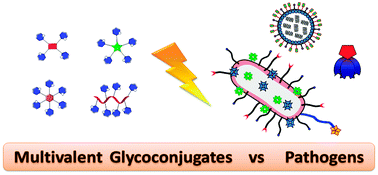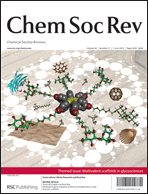*
Corresponding authors
a
Università di Milano, Dipartimento di Chimica Organica e Industriale and Centro di Eccellenza CISI, via Venezian 21, 20133 Milano, Italy
b
Centro de Investigaciones Biológicas, CSIC, 28040 Madrid, Spain
c
Università degli Studi di Parma, Dipartimento di Chimica, Parco Area delle Scienze 17/a, 43100 Parma, Italy
d
Department of Chemical Sciences, Università di Napoli Federico II, Complesso Universitario Monte Santangelo, Via Cintia 4, I-80126 Napoli, Italy
e
Department of Chemistry and Biochemistry, University of Berne, Freiestrasse 3, Berne, Switzerland
f
Institut de Biologie Structurale, 41 rue Jules Horowitz, 38027 Grenoble Cedex 1, France
g
Department of Biosciences, University of Helsinki, P. O. Box 56, FI-00014 Helsinki, Finland
h
Institute of Molecular Enzyme Technology, Heinrich-Heine-University Düsseldorf, Forschungszentrum Jülich, D-42425 Jülich, Germany
i
School of Chemistry, Bangor University, Deiniol Road Bangor, Gwynedd LL57 2UW, UK
j
Otto Diels Institute of Organic Chemistry, Christiana Albertina University of Kiel, Otto-Hahn-Platz 3-4, D-24098 Kiel, Germany
k
Laboratory of GlycoNanotechnology, CIC biomaGUNE and CIBER-BBN, P° de Miramón 182, 20009 San Sebastián, Spain
l
Department of NanoBiotechnology, NanoGlycobiology Unit, University of Natural Resources and Life Sciences, Muthgasse 11, A-1190 Vienna, Austria
m
School of Chemistry, National University of Ireland, Galway, University Road, Galway, Ireland
n
Dipartimento di Chimica, Universitá degli Studi di Firenze, Via della Lastruccia, 13, I-50019 Sesto Fiorentino – Firenze, Italy
o
Centre for Synthesis and Chemical Biology, UCD School of Chemistry and Chemical Biology, University College Dublin, Belfield, Dublin 4, Ireland
p
Organic and Medicinal Chemistry, University of Milano-Bicocca, Piazza della Scienza, 2, 20126 Milano, Italy
q
Department of Medicinal Chemistry and Chemical Biology, Utrecht Institute for Pharmaceutical Sciences, Utrecht University, P.O. Box 80082, 3508 TB Utrecht, The Netherlands
r
Département de Chimie Moléculaire, UMR-CNRS 5250 & ICMG FR 2607, Université Joseph Fourier, 38041 Grenoble Cedex 9, France
s
Glycosystems Laboratory, Instituto de Investigaciones Químicas, CSIC – Universidad de Sevilla, Av. Américo Vespucio, 49, Seville 41092, Spain
t
School of Chemistry and Astbury Centre for Structural Molecular Biology, University of Leeds, Leeds, UK
u
Department of Chemistry, National University of Ireland, Maynooth, Maynooth Co. Kildare, Ireland
v
Institut de Chimie et Biochimie Moléculaires et Supramoléculaires UMR 5246, CNRS, Université Claude Bernard Lyon 1, 43 Boulevard du 11 Novembre 1918, F-69622 Villeurbanne, France
w
University of Namur (FUNDP), Département de Chimie, Laboratoire de Chimie Bio-Organique, rue de Bruxelles 61, B-5000 Namur, Belgium
x
Laboratory of Organic Chemistry, Wageningen University, Dreijenplein 8, 6703 HB Wageningen, The Netherlands
y
Department of Chemical and Materials Engineering, King Abdulaziz University, Jeddah, Saudi Arabia
z
Centre de Recherche sur les Macromolécules Végétales (CERMAV – CNRS), affiliated with Grenoble-Université and ICMG, F-38041 Grenoble, France
E-mail:
Imberty@cermav.cnrs.fr


 Please wait while we load your content...
Please wait while we load your content...